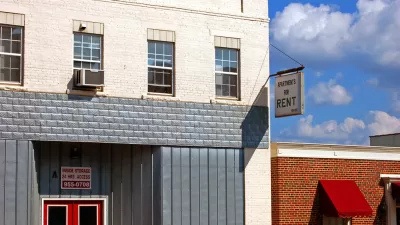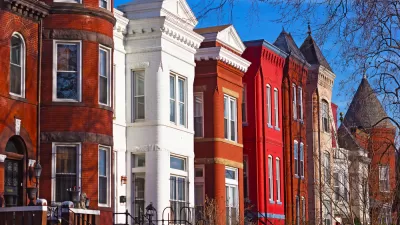Homeownership peaked at 67.3% in 2006. The Urban Institute forecasts its decline to the year 2030. Emily Badger of The Washington Post Wonkblog writes on the report released this month that evaluates homeownership rates among different demographics.
The trend is not temporary. "It won't reverse when the housing collapse fades from memory, nor as the economy picks back up," writes Badger. "By 2030, Urban [Institute] predicts, the U.S. homeownership rate will be as low as 61.3 percent — a number we haven't seen in half a century."
Today's rate is 63.6 percent according to the latest (American Community Survey) ACS numbers, notes the Introduction to the June 2015, 62-page report: "Headship and Homeownership: What Does the Future Hold?" [PDF]. The Urban Institute is "a nonprofit, nonpartisan policy research and educational organization that examines the social, economic, and governance problems facing the nation."
By contrast, "(h)omeownership rates averaged around 64 percent until about 1990, when they began to climb dramatically," note the report's authors, Laurie Goodman, Rolf Pendall and Jun Zhu.
The challenge is whether developers will accommodate the growing need for rentals and whether cities are prepared for them. "Between 2010 and 2030, according to the report, a majority of the estimated 22 million new households that will form in America will be renter households," writes Badger.
Developers will have to cater more to renters, many communities will need more apartments, and single-family homes that weren't originally built for renters will increasingly be used by them.
Badger concludes by suggesting that "maybe we'll even change how we think about homeownership, which has long been viewed as a norm in America to which everyone should aspire."
Badger's coverage approaches the Urban Institute Report from a different angle than Wall Street Journal coverage shortly after the report was released, which described decreasing homeownership rates with rising rental costs as the hallmarks of a future housing crisis.
FULL STORY: Why the homeownership rate will keep falling – and falling, and falling

Alabama: Trump Terminates Settlements for Black Communities Harmed By Raw Sewage
Trump deemed the landmark civil rights agreement “illegal DEI and environmental justice policy.”

Planetizen Federal Action Tracker
A weekly monitor of how Trump’s orders and actions are impacting planners and planning in America.

How Atlanta Built 7,000 Housing Units in 3 Years
The city’s comprehensive, neighborhood-focused housing strategy focuses on identifying properties and land that can be repurposed for housing and encouraging development in underserved neighborhoods.

In Both Crashes and Crime, Public Transportation is Far Safer than Driving
Contrary to popular assumptions, public transportation has far lower crash and crime rates than automobile travel. For safer communities, improve and encourage transit travel.

Report: Zoning Reforms Should Complement Nashville’s Ambitious Transit Plan
Without reform, restrictive zoning codes will limit the impact of the city’s planned transit expansion and could exclude some of the residents who depend on transit the most.

Judge Orders Release of Frozen IRA, IIJA Funding
The decision is a victory for environmental groups who charged that freezing funds for critical infrastructure and disaster response programs caused “real and irreparable harm” to communities.
Urban Design for Planners 1: Software Tools
This six-course series explores essential urban design concepts using open source software and equips planners with the tools they need to participate fully in the urban design process.
Planning for Universal Design
Learn the tools for implementing Universal Design in planning regulations.
Jessamine County Fiscal Court
Caltrans
Institute for Housing and Urban Development Studies (IHS)
City of Grandview
Harvard GSD Executive Education
Toledo-Lucas County Plan Commissions
Salt Lake City
NYU Wagner Graduate School of Public Service





























